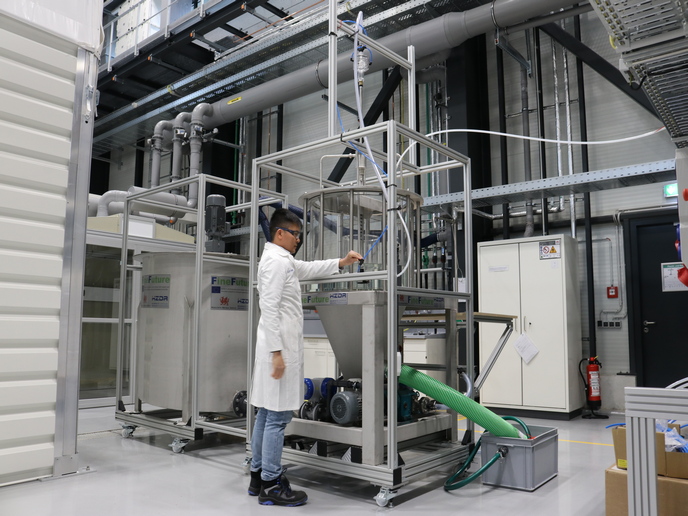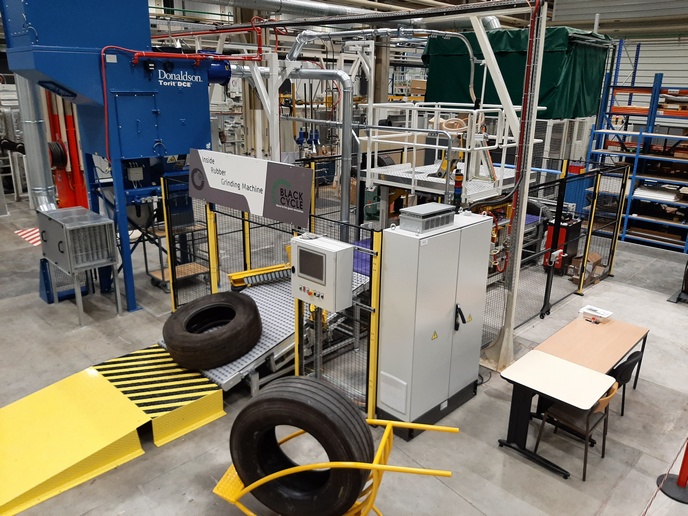Groundbreaking methods for maximising fine-particle recovery from ores
Treating fine-grained materials poses a great challenge for the mining industry. Ores must first be crushed and ground down to the micrometre range, a process that increases their surface area and liberates the mineral particles from gangue. At this early stage, froth flotation helps to separate particles based on the ability of minerals and metals, hydrophobised by flotation reagents, to adhere to the surfaces of air bubbles in an aqueous slurry. These bubble-particle aggregates are carried to the surface of the pulp (slurry), where they enter the froth which is then removed. The remaining material from the ore that does not rise to the surface forms the flotation tailings.
The challenge of recovering (ultra)fine particles
Although froth flotation can efficiently handle particles whose size ranges between 20 μm and 200 μm, it has yet to make significant headway in treating smaller particles. Fine and ultrafine particles cannot easily float as they have low collision and attachment efficiencies with air bubbles, leading to the loss of valuable minerals. Furthermore, owing to their relatively high surface area, these smaller particles require more reagents for their processing. The EU-funded FineFuture project is working on inventive solutions for recovering fines of high grade and at high rates, so that valuable ultrafine materials are no longer discarded. “The ability to recover particles smaller than 20 μm in size is very important since currently no technology exists that can efficiently capture them without spending much energy and water. Our advanced energy-efficient solutions promise significant reductions in resource losses, thereby promoting the competitiveness of the EU mining industry,” notes project coordinator Kerstin Eckert.
Going green and staying afloat
FineFuture aims to advance fundamental understanding of fine-particle flotation. Its groundbreaking technological solutions are expected to provide a sustainable pathway for valorising resources through reprocessing tailing deposits, while they could also help unlock new critical raw materials from natural deposits and mining waste. Researchers are on track to offer methods that demonstrate superior performance, 20 % energy savings and 30 % water savings compared to the state of the art.
Generating electrostatic attraction and smaller bubbles
“A major focus has been on effectively controlling the surface interactions between bubbles and fine particles to selectively enhance their attachment probability,” explains Eckert. So far, researchers have been testing methods to describe the interactions between collector reagents, depressants and minerals. The FineFuture team has also reported methods to enhance the flotation selectivity of carbonate minerals. The use of non-ionic additives led to a significant decrease in the collector consumption. The project developed a new collector causing an electrostatic attraction between bubbles and silica-based particles. An effective strategy to overcome the problems of fine-particle flotation is to decrease the bubble size and use special types of flotation cells known as reactor-separator cells that boost bubble-particle interactions. Researchers achieved progress on this front. In particular, they reported different technologies for generating microbubbles, including the use of an air-in-water microdispersion generator. Flotation tests conducted using this generator showed that microbubble addition promoted the recovery of quartz particles.
Towards a new mining paradigm
“FineFuture applies a transdisciplinary and first-of-its-kind research approach that merges colloid and interface science, fluid dynamics, physics, mineral processing, chemical engineering, electrical engineering, computational science and advanced mathematics,” notes Eckert. “Our groundbreaking concepts and technologies will shift the current mining paradigm towards exploiting natural mineral deposits consisting of tiny grains in an economic and environmentally friendly way.”
Keywords
FineFuture, mining, fine particles, ore, air bubbles, froth flotation, fine-particle flotation, microbubbles, minerals







